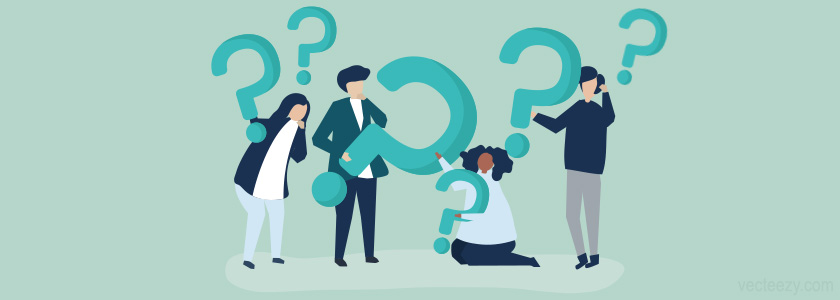 Frequently Asked Questions (FAQs)
Frequently Asked Questions (FAQs)
Here are some of the questions about AI that people often ask, along with concise answers and links to pages with more information for you
Related: AI Acronyms | Glossary | Books | AI Primer
This FAQ page is intended to help those getting started in AI understand fundamental concepts and address their common questions. Click on a link or a button for more detailed information.

What is Artificial Intelligence (AI)?
Artificial Intelligence (AI) is the simulation of human intelligence by machines. It enables computers and systems to perform tasks like learning, reasoning, problem-solving, and decision-making, often mimicking human capabilities. what is ai
How does AI work?
AI works by using algorithms and data. It processes vast amounts of information, identifies patterns, and learns from those patterns to make predictions or decisions, often without human intervention.
What are the different types of AI?
- Narrow AI (ANI): Designed for specific tasks (e.g., Siri, Alexa).
- General AI (AGI): Hypothetical AI that could perform any intellectual task a human can.
- Super AI (ASI): A theoretical AI surpassing human intelligence in all areas. Some researchers believe it will never be achieved.
What's the difference between Machine Learning and AI?
Machine Learning (ML) is a subset of AI. While AI refers to the broader concept of machines performing intelligent tasks, ML focuses on teaching machines to learn from data and improve over time without being explicitly programmed.
What are the practical applications of AI?
AI is used in:
- Virtual assistants (e.g., Alexa, Google Assistant)
- Healthcare (diagnostics, drug discovery)
- Autonomous self-driving vehicles
- Fraud detection in finance
- Personalized recommendations (e.g., Netflix, Amazon)
- A growing range of comsumer products
What is deep learning?
Deep learning is a subset of machine learning that uses neural networks to mimic the structure of the human brain. It is especially effective in tasks like image recognition, natural language processing, and speech recognition.
Do I need to know how to code to learn AI?
Basic coding knowledge helps but isn't always necessary for beginners. Tools and platforms like Python, TensorFlow, and online AI services make it easier to get started with minimal coding experience. more on coding
Is AI safe?
AI is safe when used responsibly. However, ethical concerns like data privacy, bias, and the misuse of AI technologies exist. Ethical AI development ensures safety and fairness.
How is AI different from robotics?
AI focuses on creating intelligent systems, while robotics deals with building physical machines. Some robots use AI to perform intelligent tasks, but not all robotics involves AI. Optimus
Can AI take over jobs?
AI can automate certain tasks, which may replace some jobs, but it also creates new opportunities in fields like data science, AI development, and machine learning engineering.
How do I start learning AI?
You can start by:
- Learning the basics of Python.
- Exploring free resources like Coursera, edX, or YouTube tutorials on AI.
- Experimenting with AI tools like TensorFlow, PyTorch, or Google Colab.
courses tutorials
What is Natural Language Processing (NLP)?
Natural Language Processing (NLP) is a branch of AI that deals with enabling machines to understand, interpret, and respond to human language. Examples include chatbots, language translation, and text analysis.
What is a neural network?
A neural network is a computing system inspired by the human brain's structure. It consists of layers of interconnected nodes (neurons) that process data to solve complex problems.
How does AI learn?
AI learns by analyzing data. In supervised learning, it learns from labeled datasets. In unsupervised learning, it identifies patterns in unlabeled data. Reinforcement learning involves learning through trial and error.
What are some popular AI tools or libraries?
- TensorFlow: framework for creating and deploying ML models
- PyTorch: framework for creating and deploying ML models
- Scikit-learn: library for predictive data analysis
- Keras: open source library that provides a Python interface for neural networks
- OpenAI GPT models
Can I build an AI model myself?
Yes! Beginners can build basic AI models using tools like Google Colab or platforms like IBM Watson without needing advanced technical knowledge.
What are ethical concerns in AI?
Ethical concerns include:
- Bias in AI systems
- Data privacy issues
- Autonomous weapons
- Transparency and accountability
- Data centers and the environment
What are the best AI resources for beginners?
Books: "Artificial Intelligence: A Guide to Intelligent Systems" by Michael Negnevitsky.
Courses: Coursera's "AI for Everyone" by Andrew Ng.
Websites: AI World, AI blogs, and forums.
How is AI used in daily life?
AI powers many things we use daily, such as:
- Voice assistants (e.g., Siri, Alexa)
- Spam filters in email
- Product recommendations on e-commerce sites
- Social media algorithms like those in Facebook
- Navigation apps like Google Maps
- A variety of consumer products
What's the future of AI?
The future of AI includes advancements in healthcare, climate change solutions, autonomous vehicles, and artificial general intelligence (AGI). Ethical and responsible development will play a crucial role. Age of AI